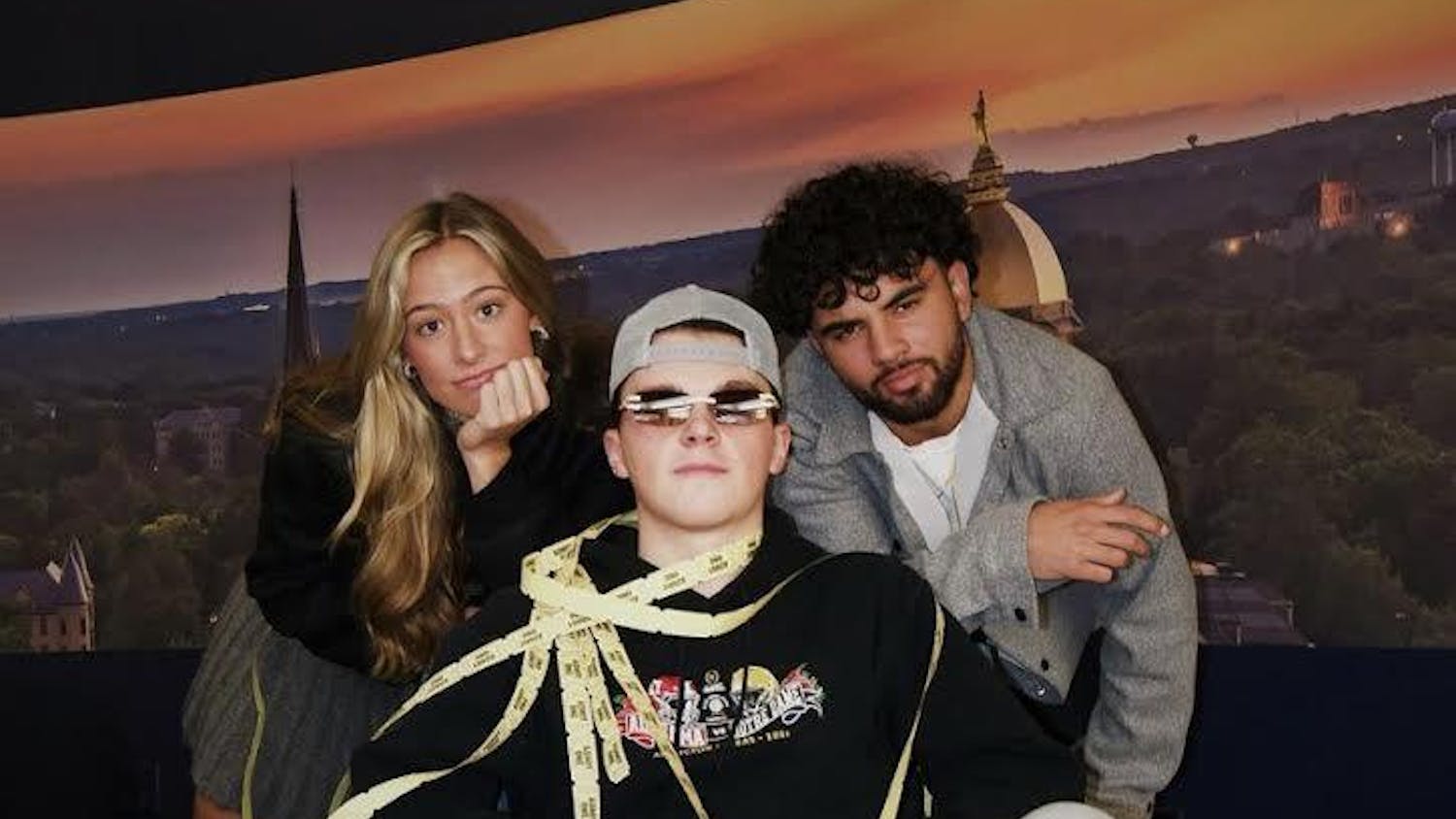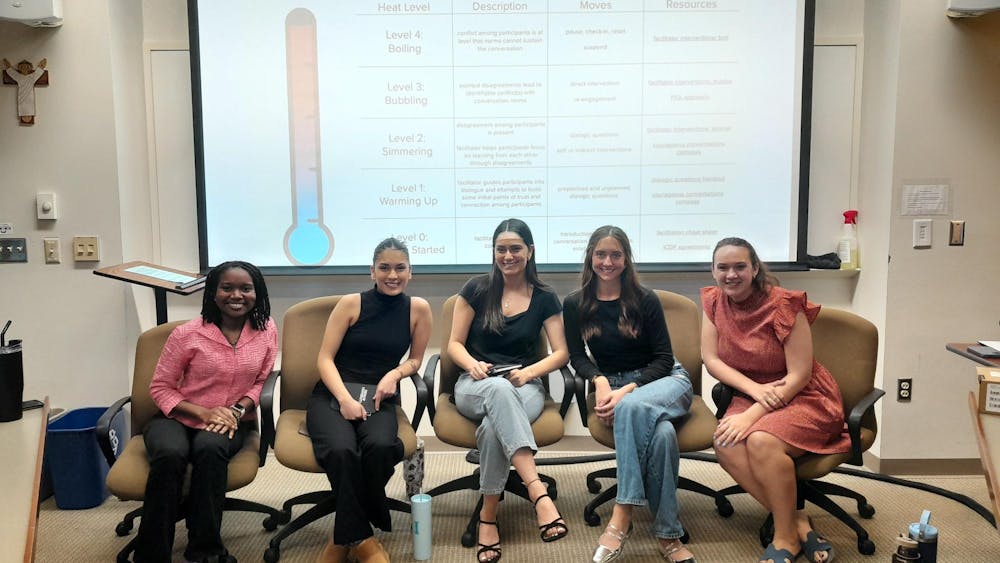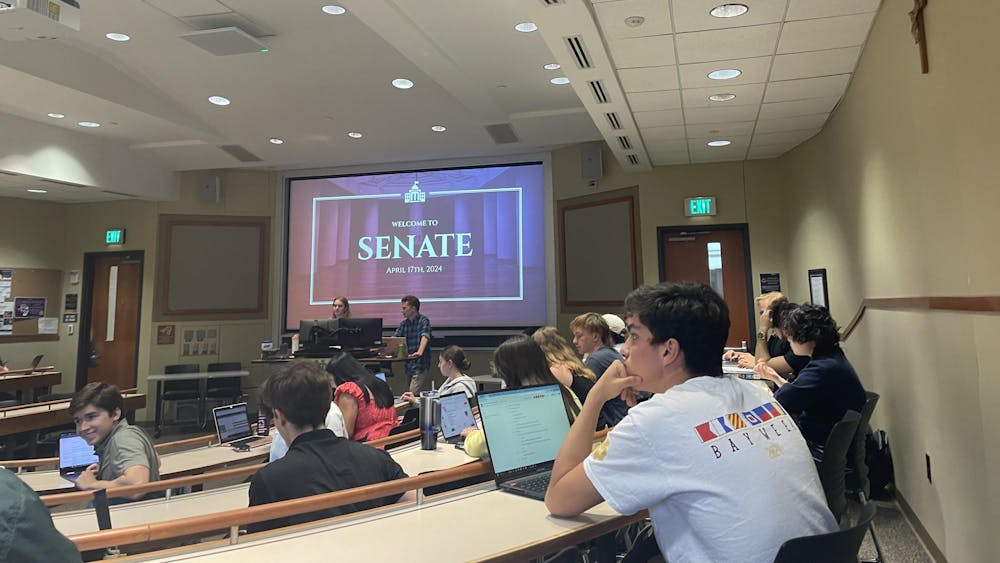The differences between human rights and civil rights can be subtle. Defining and identifying these concepts can be a difficult task.
Investigating this difference was the central topic during a five-week community engagement project with seventh and eighth grade students at Marshall Intermediate Center in South Bend. Led by three Notre Dame seniors and associate professor of history Richard Pierce, the after-school program aimed to help students map their environment, an idea developed by Stuart Greene, associate professor of Africana Studies.
“The idea is that they can claim their space and give credence to their space, their memories and realities based on that space,” Pierce said. “By mapping, they have an opportunity to say, ‘This is a safe space for me, this is a political space for me or this is a recreational space for me.’ So we thought we’d take that rubric to Marshall.”
Meeting every Thursday evening from February until mid-March, seniors Promise Choice, Asha Barnes and Frederick Canteen helped both develop lesson plans and direct discussions with the six Marshall students.
“We started thinking about things that I didn’t have in school and things that I would have wanted because my school was also predominantly black and Latino,” Choice said. “What we wanted to do was give the kids a place to talk about things that they don’t ordinarily get to talk about.”
After the first session, Choice explained, the lessons shifted into defining and discussing human rights and civil rights, drawing from the Constitution, Bill of Rights and Supreme Court cases.
“Clean water was one they threw out that should be a human right, but it is not,” Pierce said. “It depends on where you live. The right to go to school — they thought was a human right. Well, it’s a civil right. That took us a little longer than we thought, so instead of mapping we ended up with human rights and civil rights as our fulcrum.”
For Pierce, trust is a vital component of a successful discussion. He said that young children have the potential to be critical, and winning them over was key to the program’s success.
“They’re looking at us like, ‘Are you worth my time?’” he said. “And I think that was one thing that those kids did. They judged us. And in the second week, I think they thought, ‘Yeah, these guys are worth our time.’ That was a moment of breakthrough.”
For Choice, this breakthrough was an empowering experience.
“I realized that kids learn better when it comes from kids like me. I think that’s why Professor Greene chose to involve us,” Choice said. “If it’s a student of color that’s gone through that same system, then they’re more likely to listen and we’re better able to empathize.”
By the end of the five weeks, the students were leading the discussions.
“Once we found ways to explain it in things that were relevant to them, like clothes and food, they cared,” Choice said. “If we took it in terms of their community and what resources they saw in their community, then that was more relatable to them.”
As with most projects in their initial year, there were some growing pains. From logistical issues or lack of resources to the snow days, there were several hurdles that prevented consistent planning and progress, Choice said. In addition, Marshall’s principal, who was the connection through which the program began, was stretched thin following the announcement of the school’s closing at the end of the school year.
Despite these setbacks, Choice said it is important for the program to continue.
“It’s such a small commitment, but it’s something that matters so much,” she said. “When I was in school, no one ever came in and took the time to volunteer and talk to us. Just to see someone making an effort is validating, and to give someone a platform to speak on what they think is important.”
Whether the program continues to focus on human and civil rights or shifts to political rights and activism, Pierce said he would also like to see more engagement with local schools in the future.
“Any kind of binary work that will allow students to see that they have an active voice in the world,” he said. “That’s what the overall goal of this program was — to see how students of every age have an opportunity to impact their community and how they can do that, whether it be through activism, information, education or using whatever means they have to educate their community to make it a more intimate community.”













